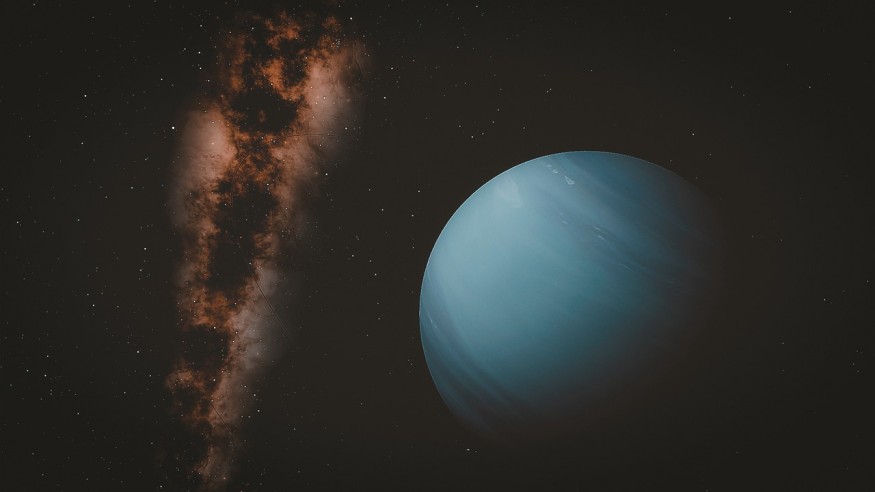Exoplanet TOI-674b was first discovered by Jonathan Brande, a doctoral student in physics and astronomy at the University of Kansas. He saw that the planet orbiting a small star has a large transit signal that makes it easy to study compared to other exoplanets.
The said planet is slightly bigger than Neptune orbiting a red dwarf star about 150 light-years away from Earth. Surprisingly, this exoplanet belongs to the exclusive club of planets that have water vapor in their atmospheres. This opened many questions since it is unusual for an exoplanet orbiting far from its star to have water vapor in its atmosphere.

Neptune-Like Exoplanets are Difficult to Find
Scientists have been looking for Neptune-like planets outside the Solar System, but they have only seen exoplanets that orbit shorter than a few days, which they refer to as a Neptunian desert of hot, star-skimming planets.
Astronomers do not know why Neptune-like planets are scarce, especially when some Earth-like planets are whipping around their stars at faster rates, as well as hot Jupiters that orbit within hours pop up regularly. Science Alert reported that the size or positioning of the exoplanet in their solar system might have made them less likely to be found or they do not stick around long enough to be detected.
But now they noticed something unusual about a recently discovered middle-range Neptune-like exoplanet. Astronomers found water vapor in its atmosphere, which gives hints that it is special.
Discovering water on other planets is already exciting, but having to break down the gases in its atmosphere responsible for the water vapor is more important because it gives details on the cosmic birth and gives scientists insight into how they formed in their solar system.
Water Vapor Found in Exoplanet TOI-674b
Exoplanet TOI-674b is a Neptune-like exoplanet that is about 1.3 times the size of Neptune and 23 times the mass of Earth, according to Inverse. It tightly orbits around its star, completing one revolution in just two days. Brande said that it is unusual to find hints of water vapor in these kinds of planets because they usually lose their atmospheres from solar radiation or they migrate away.
Moreover, Neptune-like planets rarely have detectable water vapor because they orbit far from their stars. For now, researchers are unsure as to why there is water vapor in TOI-674b's atmosphere. They noted that they would need the recently launched James Webb Space Telescope to uncover this mystery.
The telescope is designed to study the atmosphere of exoplanets in greater detail than its predecessor, the Hubble Space Telescope, with its high-resolution lenses to witness planets orbiting in their stars to draw out their atmospheric properties.
The next step for scientists is to measure the amount of water vapor in TOI-674b to better understand where it formed in its solar system and how it moved to its current location. Brande explains that a location called the frost line can irradiate water by the host star and stay in their evaporated states.
Understanding how exoplanet TOI-674b formed will also help scientists understand gas giants in the Solar System and its history so they can know where Earth fits into the whole picture.
RELATED ARTICLE : NASA Discovered "Hot Jupiter" Exoplanet, Bigger But Less Massive Than Solar System's Largest Planet
Check out more news and information on Exoplanets in Science Times.












